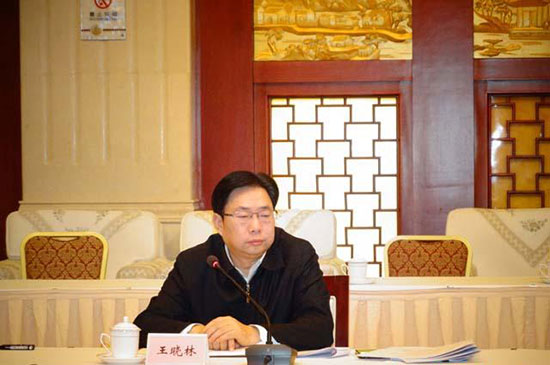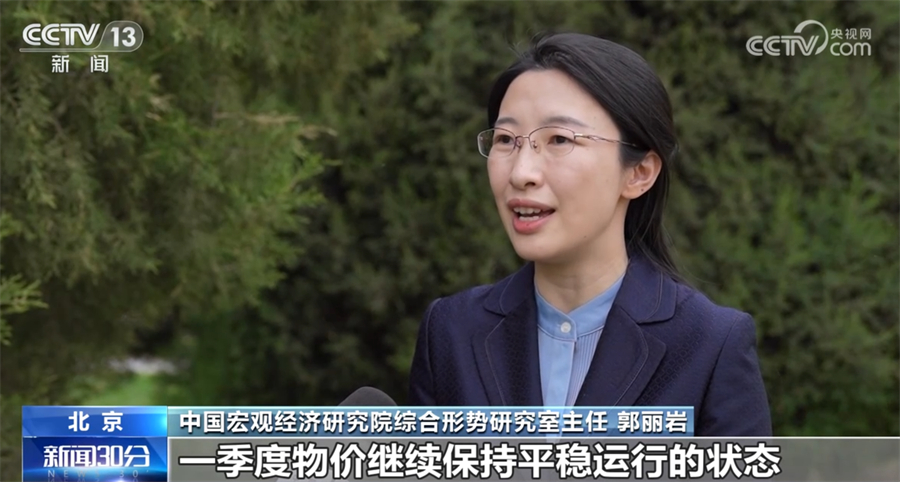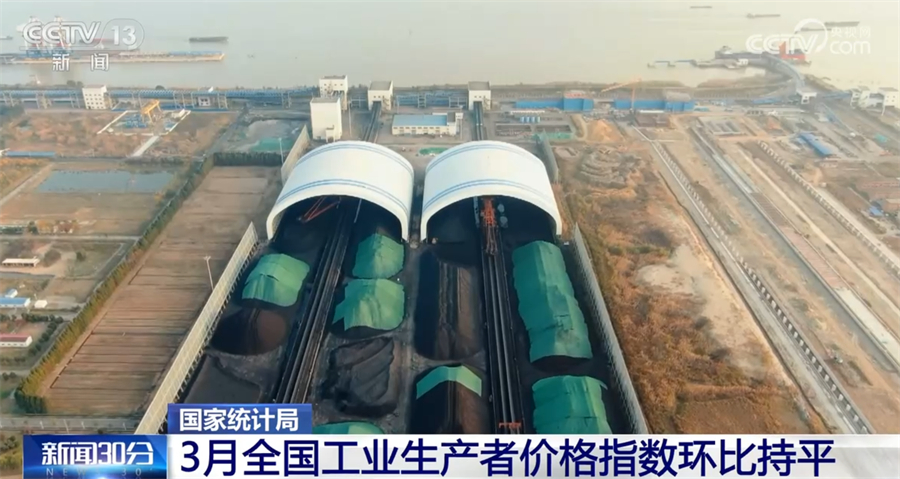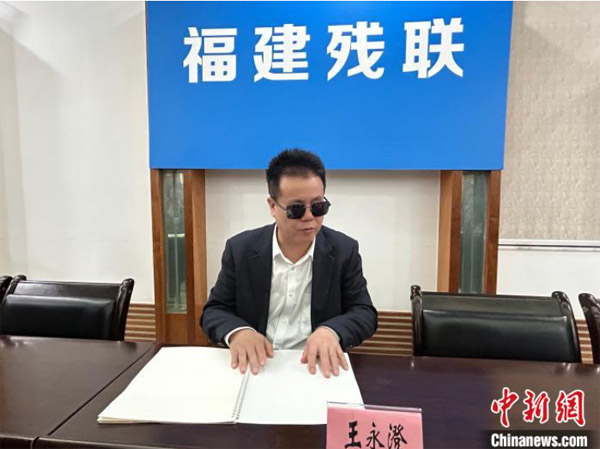CCTV News:At 9: 00 on January 23, 2018, CPC Central Commission for Discipline Inspection released a message: Wang Xiaolin, a member of the party group and deputy director of the National Energy Administration, is suspected of serious violation of discipline and is currently under organizational review.

Wang Xiaolin’s last public appearance was on January 5th. On January 11th, official website, the National Energy Administration, announced that from January 2nd to 5th, Wang Xiaolin, deputy director of the National Energy Administration, went to Hunan, Jiangxi and Hubei provinces to investigate the situation of coal production capacity reduction and supply guarantee. During this period, Wang Xiaolin listened to the introduction of resolving excess capacity, economic operation and energy supply in the coal industry of the three provinces, had discussions and exchanges with relevant local departments and coal and electric power enterprises, conducted field research in some coal mines in Hunan and Jiangxi, and put forward requirements for related work.
Wang Xiaolin was born in October 1963, a native of Chongqing. He joined the work in July 1983 and joined the party in November 1989. He has a bachelor’s degree and is a senior engineer.
"Two Blacks" Exposed by Shenhua Group
It is found that Wang Xiaolin’s main work experience was spent in the energy system. In July 1983, he served as a technician and assistant engineer in the technical department of Yangtuo Mine of Beijing Mining Bureau. In April 1989, he joined Huaneng Clean Coal Co., Ltd. as an engineer in the planning department, and was promoted to the deputy manager of the production department of Huaneng Clean Coal Co., Ltd. in three years; In October 1995, Wang Xiaolin joined Shenhua Group Co., Ltd. as the deputy manager of the production department, and spent the next 20 years in Shenhua, from the deputy manager of the department to the deputy general manager of the group.

In 2014, the Central Inspection Team entered Shenhua Group and found a series of outstanding problems. Prior to this, Wang Xiaolin had worked in Shenhua for 19 years.
CPC Central Commission for Discipline Inspection’s inspection revealed Shenhua Group’s long-term "management confusion": engineering management confusion and experience sales confusion. It is worth noting that CPC Central Commission for Discipline Inspection revealed in his two rounds of inspections of Shenhua Group that the main problems of Shenhua focused on "two evils": there was a "black hole" in the interest transfer of Shenhua coal fire extinguishing project, and some business leaders manipulated the examination and approval authority of key contract coal to seek corruption "black gold".
According to CPC Central Commission for Discipline Inspection’s circular, the management of Shenhua Group’s coal fire-fighting project is chaotic, and some private bosses, driven by interests and protected by "power", wantonly exploit and sell coal under the banner of fire-fighting project, and even deliberately create coal fires and falsely report fire-fighting projects. Some fire fighting projects are subcontracted at different levels, causing ecological damage and frequent accidents. Fire fighting project has become a "profiteering project" for a few people, forming a "chain" corruption. For a long time, Shenhua Group’s coal operation and sales management was chaotic, and a few people manipulated the examination and approval authority of key contract coal, forming a large rent-seeking space. Some business leaders formed an interest alliance in coal sales and used the price difference of coal policy for personal gain, which was suspected of serious violation of discipline and law.
In addition, it is also revealed that some party organizations have some negative conditions, such as lax management, laissez-faire, indulgence and even abandonment of management. In particular, the grass-roots organizations of many affiliated companies are lax in discipline and disorganized, and party member cadres’ political awareness is weak, their thinking is declining, and the cohesion and combat effectiveness of party organizations are greatly reduced, which is worrying. The supervision responsibility of some discipline inspection and supervision institutions is seriously lacking, which is not only ineffective and ineffective, but also exists the problems of individual covering up corruption and self-corruption.
After the "black hole" incident broke out, Shenhua immediately investigated and dealt with Zhang Wenjiang, Niu Jinzhong and Liu Baolong, three responsible persons of Shenning Coal Industry Group under Shenhua Group, and transferred them to judicial organs for handling.
During two rounds of inspections in CPC Central Commission for Discipline Inspection, Shenhua Group handled a total of 271 people, among whom 101 people were given disciplinary sanctions, and talked with informed criticism and admonishing, 25 grass-roots party organizations.
Corruption in the energy field
In August, 2015, Wang Xiaolin was appointed as the deputy director and member of the party group of the National Energy Administration. According to the public information of official website of the National Energy Administration, Wang Xiaolin was in charge of the comprehensive department, the coal department, the personnel department, the directly under the authority Party Committee, the directly under the authority Commission for Discipline Inspection, the information center, the agency service center and CLP Media. Responsible for the openness of government affairs.
Since 2013, the National Energy Administration has been hit hard by anti-corruption, including Liu Tienan, former director, Xu Yongsheng, deputy director, and several directors who were dismissed by CPC Central Commission for Discipline Inspection.
Why is corruption frequent in the energy field? In July, 2014, China Discipline Inspection and Supervision newspaper published "Perspectives on Corruption and Anti-corruption in Energy Field", which pointed out that energy plays an important role in contemporary society. Developing and protecting energy industry is the fundamental interest of our country. Therefore, the energy industry is endowed with a special status and management mode, which leads to the fact that the power factor in the management and operation of this field far exceeds the market factor, and monopoly always occupies a dominant position, which is easy to lead to corruption. The loopholes in the setting of examination and approval power, program design, public procurement and management of state-owned enterprises have increased this possibility.
On June 8, 2016, the website of the Supervision Department of the Central Commission for Discipline Inspection announced the inspection of the National Energy Administration. According to the circular, the reform of administrative examination and approval of the National Energy Administration is weak, and the problem of abusing power for personal gain is serious. Some leading cadres are keen on examination and approval, which replaces planning control and industry supervision. There is a large space for examination and approval discretion, inadequate supervision and control, and insufficient openness and transparency, resulting in ultra vires examination and approval, abuse of power, and malpractice for personal gain.
It is worth mentioning that the coal department in charge of Wang Xiaolin once had the infamous "director of 100 million yuan" Wei Pengyuan. Wei Pengyuan is a typical representative of abusing power for personal gain in the energy field. In 2014, Wei Pengyuan, deputy director of the Coal Department of the National Energy Administration, was investigated. More than 200 million yuan of stolen money was found from his home, and a money counter was burned on the spot. It was found through trial that from 2000 to 2014, the defendant Wei Pengyuan took advantage of his position as deputy director of the Coal Division of the Basic Industry Development Department of the State Development Planning Commission, researcher of the Kerosene Division, director of the Coal Division of the Energy Bureau of the National Development and Reform Commission, and deputy director of the Coal Division of the National Energy Administration to seek benefits for others in matters such as coal project review, expert review, contracting projects by coal enterprises, urging for payment, and selling equipment, and illegally accepted other people’s property, totaling RMB 2.11700. There are still huge amounts of property in Wei Pengyuan that obviously exceed the legitimate income, and the source cannot be explained.
Previously, in 2013-2014, a series of "earthquakes" were triggered by the fall of former director Liu Tienan of the National Energy Administration. At that time, Hao Weiping, director of the Nuclear Power Department of the National Energy Administration, Wei Pengyuan, deputy director of the Coal Department, Xu Yongsheng, deputy director of the National Energy Administration, Alvin Wong, director of the New and Renewable Energy Department, and Yu Yanshan, director of the Development Planning Department of the National Energy Administration, were taken away for investigation. This is after a lapse of three years, another official of the Energy Bureau has fallen.






